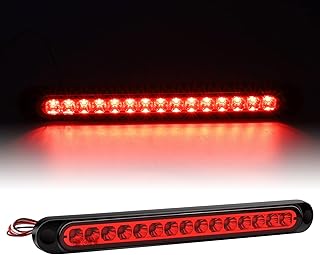Strobing brake lights have generated discussions around their legality and safety on the roads. The debate revolves around the frequency and speed at which these lights flash. According to regulations, once activated, these strobing lights are limited to flashing no more than four times within a four-second timeframe. This restriction aims to balance the need for visibility and alerting other drivers without causing distractions or confusion.
Such regulations concerning strobing brake lights reflect the ongoing efforts to adapt to advancements in automotive technology. As vehicles become more sophisticated, lawmakers and regulators must navigate the fine line between innovation and safety. The dynamic nature of these discussions underscores the importance of updating traffic laws to keep pace with emerging trends in the automotive industry.
Experts suggest that the acceptance of strobing brake lights could signal a shift towards embracing new lighting technologies in vehicles. As drivers and manufacturers explore ways to enhance visibility and communication on the road, innovations like strobing lights could offer a modern solution to traditional brake light systems. However, ensuring that these advancements comply with safety standards remains a key consideration in implementing such technologies.
Historically, the evolution of automotive lighting systems has been marked by continuous improvements in visibility and safety features. From the introduction of brake lights to the development of LED and strobing technologies, each innovation has aimed to enhance driver awareness and reduce the risk of accidents. The ongoing debate over strobing brake lights is part of this broader narrative of innovation and regulation in the automotive sector.
Industry experts emphasize the importance of balancing innovation with safety when introducing new lighting features in vehicles. While strobing brake lights have the potential to improve visibility and convey critical information to other road users, their implementation must adhere to established guidelines to prevent unintended consequences. As automotive technology continues to advance, stakeholders must collaborate to ensure that safety remains a top priority.
The discussion surrounding strobing brake lights highlights the intersection of technology, regulation, and road safety in the automotive industry. By exploring the implications of these lighting innovations, stakeholders can work towards developing comprehensive guidelines that address both the benefits and potential challenges associated with modernizing vehicle lighting systems. Ultimately, fostering dialogue and cooperation among industry players and regulators is essential to promoting safe and efficient driving practices in an evolving automotive landscape.
📰 Related Articles
- Victoria E-Scooter Trial: Rules, Regulations, and Safety Guidelines
- Urgent Calls for Stricter E-Scooter Safety Regulations in Australia
- Ultrasound Innovation Enhances Battery Safety and Efficiency
- Soy Isoflavones: Balancing Health Benefits and Safety Concerns
- Samantha Thavasa: Balancing Tradition and Innovation in Fashion Industry
📚Book Titles
- AI Secrets to Trading like a PRO: Use Machine Learning to Trade the Stock Market and Profit
- 12 Reasons to Stop Caring What People Think: Secrets to Personal Freedom and Unstoppable Success!
- Skyline Unleashed: Mastering the Art of Modding Nissans Performance Icon
- Woman of the Hour: Rodney Alcala and the Dating Game Deception






